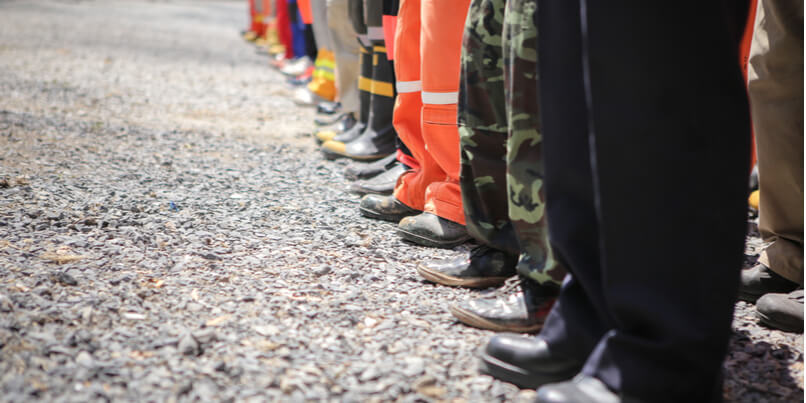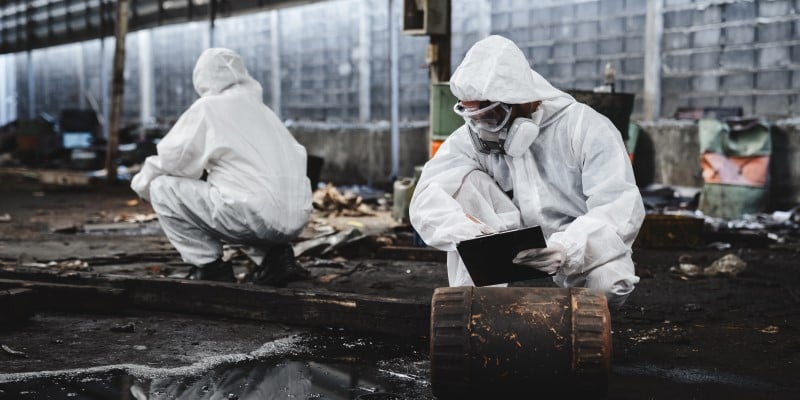 Hands-on training in realistic environments is a cornerstone of CBRNe disaster preparedness, whether for the purpose of military exercises, first response or civilian operations.
Hands-on training in realistic environments is a cornerstone of CBRNe disaster preparedness, whether for the purpose of military exercises, first response or civilian operations.
The quality, frequency and consistency of CBRNe training has a substantial part to play in how easily personnel are able to acquire both the theory and the practice - and in how effectively they are able to continue to apply that knowledge in the long-term.
The impact and the authenticity of CBRNe training relies on three fundamental principles.
First is the importance of providing trainees with the opportunity to use actual equipment.
Second is enabling those personnel to apply their understanding of this equipment through exposure to realistic scenarios.
And thirdly is ensuring that the scenarios that are provided are conducted in relevant environments or locations.
Time restrictions, cost implications and safety considerations however, can all too often limit the opportunities for responders to practice, test and hone their crucial skills.
Training for radiation incidents
When an incident involves the presence of a high-radiation source or radioactive contamination, it can present some additional challenges.
At the same time, the equipment that radiological responders are required to use is also becoming increasingly sophisticated - and in particular when it comes to effective search and radionuclide identification (spectrometry.)
Many traditional radiation safety training methods can struggle to credibly recreate the complexities of real-life radiological events.
Field exercises can offer the promise of a high fidelity training experience, but sometimes fall short due to the minimal quantity of radiation source that can be safely used.
In the process, an understanding of essential physics can all too easily be diluted, misinterpreted or omitted altogether.
To ensure best preparedness, it is vital that emergency responders are provided with the opportunity to train against robust scenarios that take place in their home locations, that utilise their actual operating equipment and that enable them to put their protocols to the test.
Is virtual reality immersion the key?
Over the couple of decades there has been an increased interest in the potential applications of virtual reality (VR) and augmented reality (AR) in the enhancement of CBRN disaster preparedness.
In contrast to traditional user desktop interfaces, such as viewing a scenario on a computer screen, VR harnesses the power of computer technology to create a simulated environment that aims to recreate as many of the senses as possible.
Virtual reality enables the user to be placed directly "inside" the training experience, and once they are immersed in this artificial world, to be able to interact with a hyper realistic 3D environment.
Immersive multi-user VR training systems can be used to enhance situational awareness, to aid in the operation of equipment or to improve reaction times.
Some systems are designed to provide a pre-defined scenario (or scenarios) in order to train multiple users - for example when a large number of simulators are used in order to train military personnel for specific land, air or naval operations. Others allow the creation of self-defined scenarios that can be applied in multi-user training exercises.
Whilst VR creates an artificial environment in which the user can "inhabit", augmented reality can be used to enhance live exercises in a real environment by superimposing computer-generated images over the user's view of the real world.
But while virtual reality or augmented reality immersion exercises can offer many advantages, it is still extremely difficult to replicate the logistical, physiological and sensory realities of a taking part in a live incident.
In many cases too, virtual reality training must be restricted to specialised facilities. And perhaps most crucially, trainees miss the opportunity to practice with the actual detector equipment that they will be required to use in real incidents.
Maintaining operational readiness is vital, however it can often be difficult to provide personnel with access to the hands-on radiological training that they need.
Emergency training requires the mastery of a variety of skills and abilities - but placing trainees in real emergency situations, especially during the initial stages of training, is something that is best avoided.
What is of greater benefit is being able to provide personnel with expert guidance that takes place in a setting that mimics, as closely as possible, the challenges of real-life events.
What is required is a paradigm shift in the approach to radiological preparedness training.
If, for example, the potential applications of virtual technology can be merged with the hands-on application of real-world capabilities, then the possibilities could well be limitless.
With this goal in mind, Argon Electronics is excited to have joined forces with the Lawrence Livermore National Laboratory (LLNL) to explore the potential of the LLNL's Radiation Field Training Simulator (RaFTS).
If you are interested to learn more about the practical applications of simulator technology for the purposes of radiation training, then please download a copy of our free eBook.







